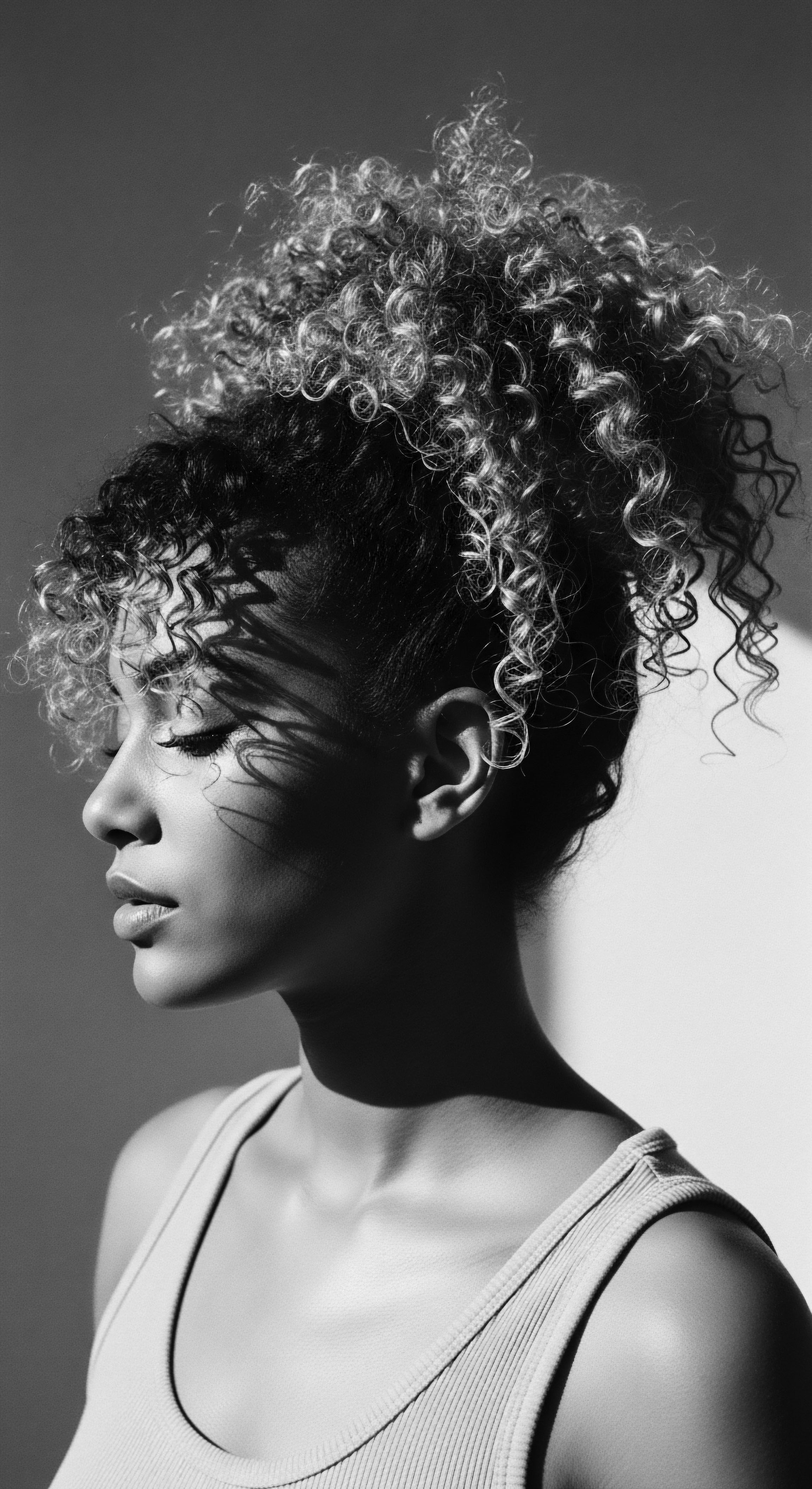
Fundamentals
The essence of Personalized Hair Care, at its fundamental level, is a recognition that no two crowns are alike, and therefore, their needs cannot be universally addressed with a singular solution. This concept transcends the modern commercial landscape of beauty, reaching back to ancient practices and inherent wisdom. Its most straightforward explanation involves tailoring hair care routines, products, and practices to the Individual Characteristics of one’s hair and scalp. This encompasses an array of factors, including hair texture, porosity, density, elasticity, scalp condition, environmental exposures, and even lifestyle choices.
For those new to this profound idea, imagine a garden. A gardener would never treat all plants identically; some thrive in shade, others demand sunlight, some require specific soil nutrients, and others need ample water. Hair, in its biological intricacy, functions similarly, seeking a tailored environment to flourish.
The initial understanding of Personalized Hair Care begins with a shift in perspective. Instead of seeking a “one-size-fits-all” miracle product, one begins a dialogue with their own hair, observing its responses, listening to its whispers of dryness or resilience. This foundational awareness often reveals that textured hair, particularly that of Black and mixed-race individuals, carries an innate demand for this individualized approach.
Its unique helical structure and propensity for dryness necessitate a departure from approaches designed for straighter, oilier hair types. This fundamental understanding is where the journey to truly honoring one’s hair begins, laying the groundwork for more intricate explorations of its inherent biology and cultural story.
Personalized Hair Care, in its simplest form, is the deliberate act of attuning one’s hair regimen to the distinct characteristics of individual strands and scalp, acknowledging that true vitality arises from specific, informed attention.
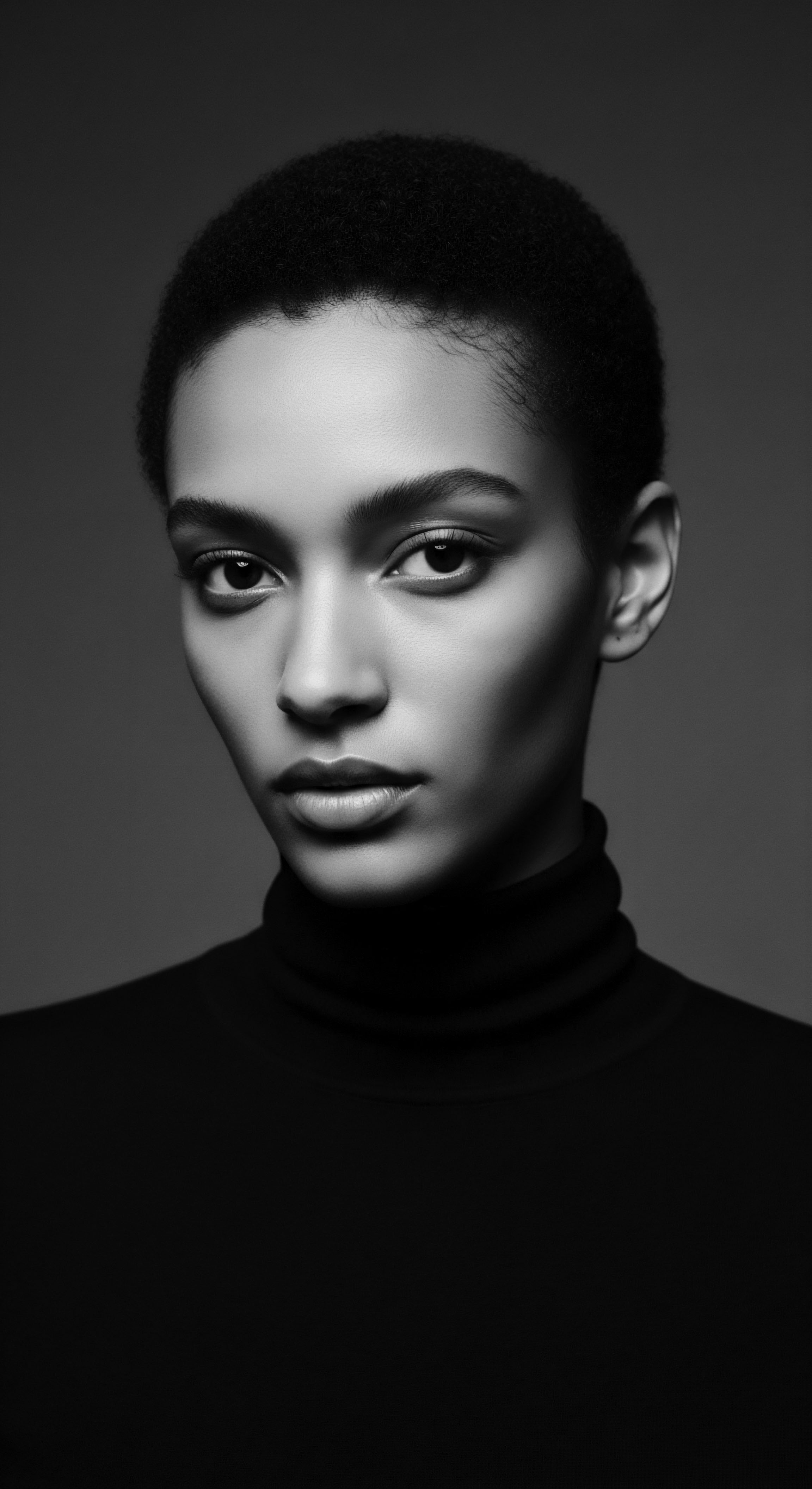
Understanding Hair’s Unique Blueprint
Each strand of hair, often described as a filament of keratinized protein, possesses a unique morphology. For individuals with textured hair, this translates into a spectrum of coil patterns, from loose waves to tightly wound coils, each presenting different challenges and opportunities for care. The way these individual strands interact, coil, and absorb or repel moisture dictates much of what a personalized routine will entail.
This biological blueprint is not a flaw; it is a testament to the remarkable diversity of human physiology. It is also a reminder that care must extend beyond the superficial, reaching into the very structure of the hair itself.
- Texture ❉ The shape of the hair strand, ranging from straight to wavy, curly, and coily. This influences how light reflects, how oils travel down the shaft, and how easily hair tangles.
- Porosity ❉ The hair’s ability to absorb and retain moisture, which is influenced by the condition of the cuticle. Low porosity hair struggles to absorb, while high porosity hair struggles to retain.
- Density ❉ The number of hair strands per square inch of the scalp. This affects product application and styling techniques.
- Elasticity ❉ The hair’s ability to stretch and return to its original state without breaking, a sign of its internal protein and moisture balance.
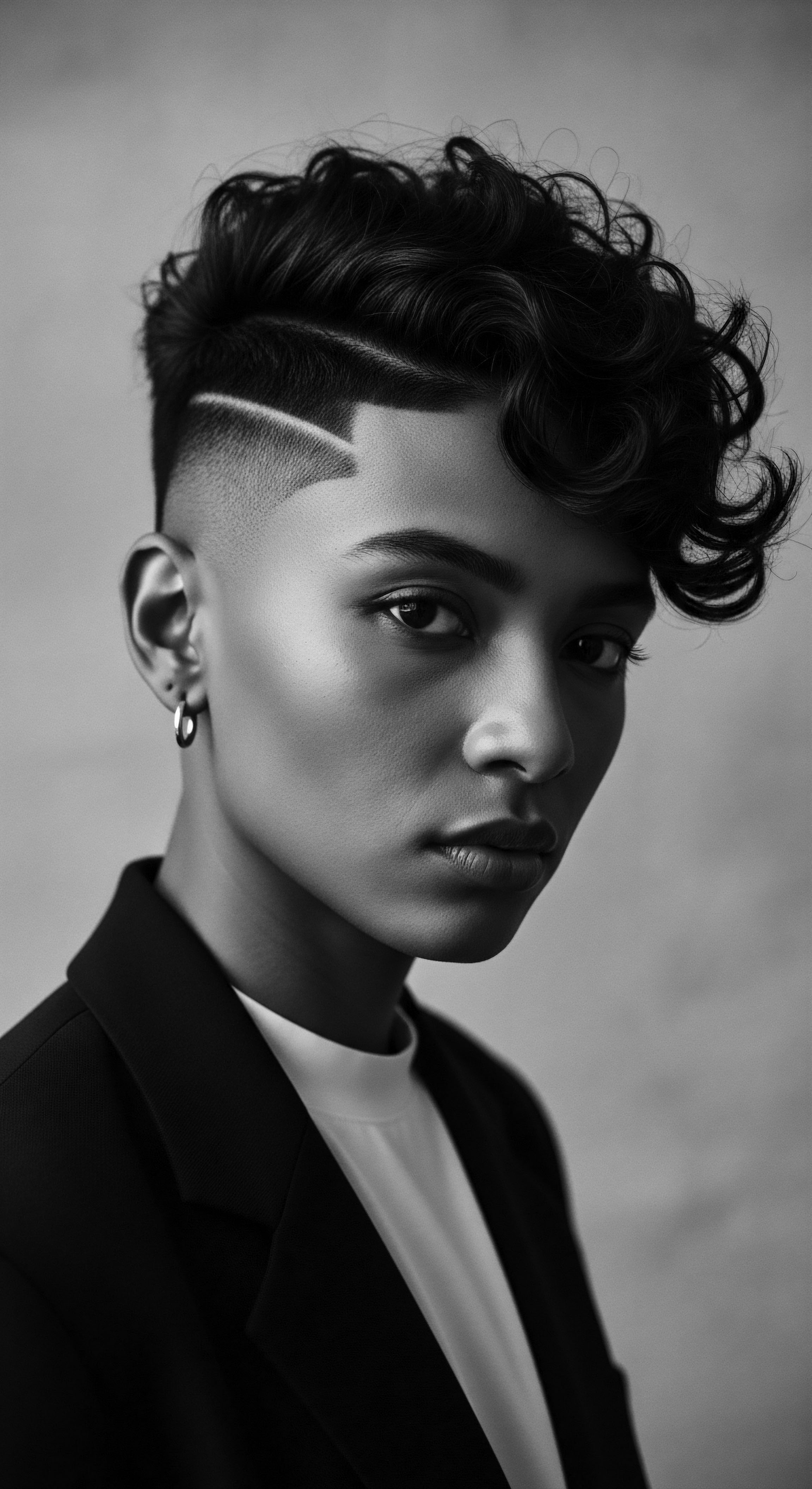
Early Glimmers of Personalization in Ancestral Practices
Long before modern science offered its categorizations, ancestral communities understood the need for individualized care. The notion of ‘Personalized Hair Care’ is not a recent innovation; its roots run deep within traditional practices across African cultures and among diasporic peoples. Historically, communal hair care rituals were highly specialized, passed down through generations, and often tailored to the specific hair types within a family or tribe. The choice of herbs, oils, and styling methods reflected a profound, intuitive understanding of different hair needs and how they responded to local flora and climate.
For instance, in many West African societies, the act of hair grooming was a revered communal activity, an intergenerational transfer of practical knowledge and spiritual connection. Tools and ingredients were not randomly chosen; they were selected for their particular properties, often reflecting a practical application of ethnobotanical wisdom. This early form of personalization was born from observation and deep respect for the hair’s inherent qualities, demonstrating an intuitive grasp of what hair required to thrive within specific environmental and cultural contexts.
| Aspect of Care Product Selection |
| Generalized Approach (Historical) Limited, often basic soaps or lye-based cleansers. |
| Ancestral Personalized Approach (Example) Specific plant extracts, butters (e.g. shea, cocoa), and oils (e.g. palm, castor) chosen for unique properties. |
| Aspect of Care Application Method |
| Generalized Approach (Historical) Simple washing and basic styling. |
| Ancestral Personalized Approach (Example) Intricate braiding, oiling, and conditioning rituals, often involving specific techniques for different hair textures within a community. |
| Aspect of Care Focus |
| Generalized Approach (Historical) Cleanliness and basic appearance. |
| Ancestral Personalized Approach (Example) Holistic health, spiritual significance, and protection from elements. |
| Aspect of Care The enduring wisdom of ancestral practices reveals an early recognition of diverse hair needs, a concept later formalized as Personalized Hair Care. |
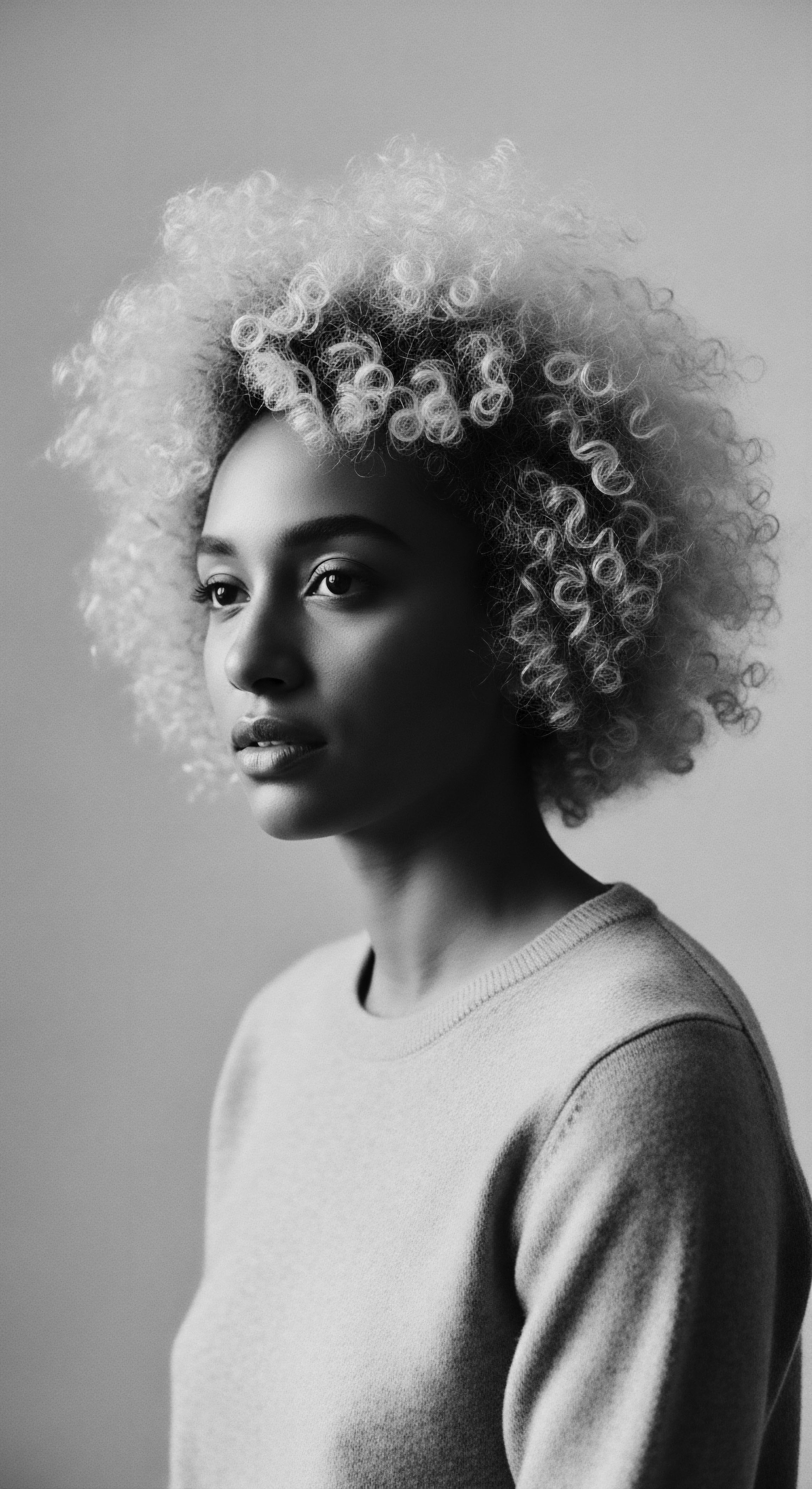
Intermediate
Moving beyond the foundational understanding, the intermediate meaning of Personalized Hair Care unfolds as a deeper discernment of the intricate relationship between hair biology, environmental factors, and individual hair journeys. This perspective acknowledges that true personalized care extends beyond merely identifying hair type; it involves a dynamic adaptation to the hair’s evolving state and the external forces it encounters. Hair, particularly textured hair, is a living canvas that responds to humidity, diet, styling practices, and even the emotional landscape of its bearer. The historical context of this responsiveness is especially profound for Black and mixed-race communities, where hair has long served as a sensitive barometer of both internal and external realities.
The interpretation of Personalized Hair Care at this level involves a more detailed investigation into the hair’s specific needs, moving beyond broad categories to precise attributes such as how a particular strand interacts with water (porosity) or its inherent strength (elasticity). This level of observation often bridges traditional wisdom with nascent scientific understanding, demonstrating how ancient care rituals, often passed down through generations, intuitively addressed these complex hair attributes without the lexicon of modern dermatology. It highlights a continuous thread of knowing, a historical understanding of hair as a complex entity requiring bespoke attention.
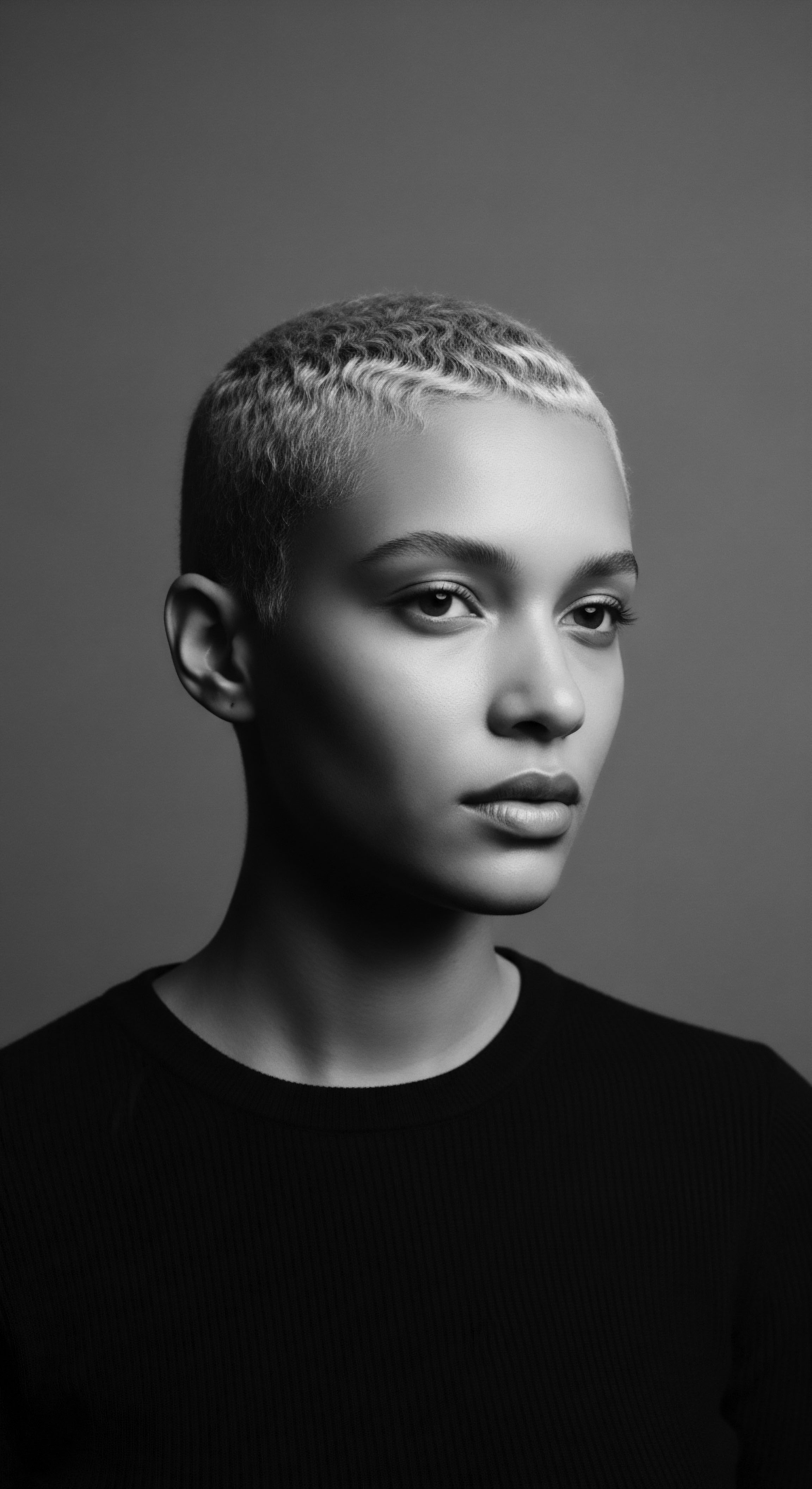
The Living Hair ❉ Responding to Environment and Practice
Hair is not a static entity; it reacts to its environment, a living archive of atmospheric shifts and daily interactions. Humidity, for instance, can cause hair to swell or shrink, leading to frizz in highly porous strands or increased definition in coily patterns. Similarly, the mineral content of water, often overlooked, significantly affects hair’s moisture balance and overall feel.
Understanding these external influences informs the selection of products and techniques, making a personalized approach not just beneficial, but essential for maintaining vitality. This responsiveness underscores the fact that hair care is a continuous conversation, not a fixed prescription.
- Humectants ❉ Ingredients drawing moisture from the air, often used to combat dryness in arid climates or enhance curl definition in humid ones.
- Sealants ❉ Oils and butters applied to lock in moisture, particularly important for highly porous hair or those living in dry conditions.
- Protein Treatments ❉ Used to strengthen hair that has lost elasticity due to damage or environmental stress, a practice often mirrored by historical applications of strengthening natural extracts.
- PH Balance ❉ Maintaining the scalp and hair at an optimal pH prevents issues like dryness or irritation, a concept implicitly understood through the use of acidic rinses in some ancestral practices.
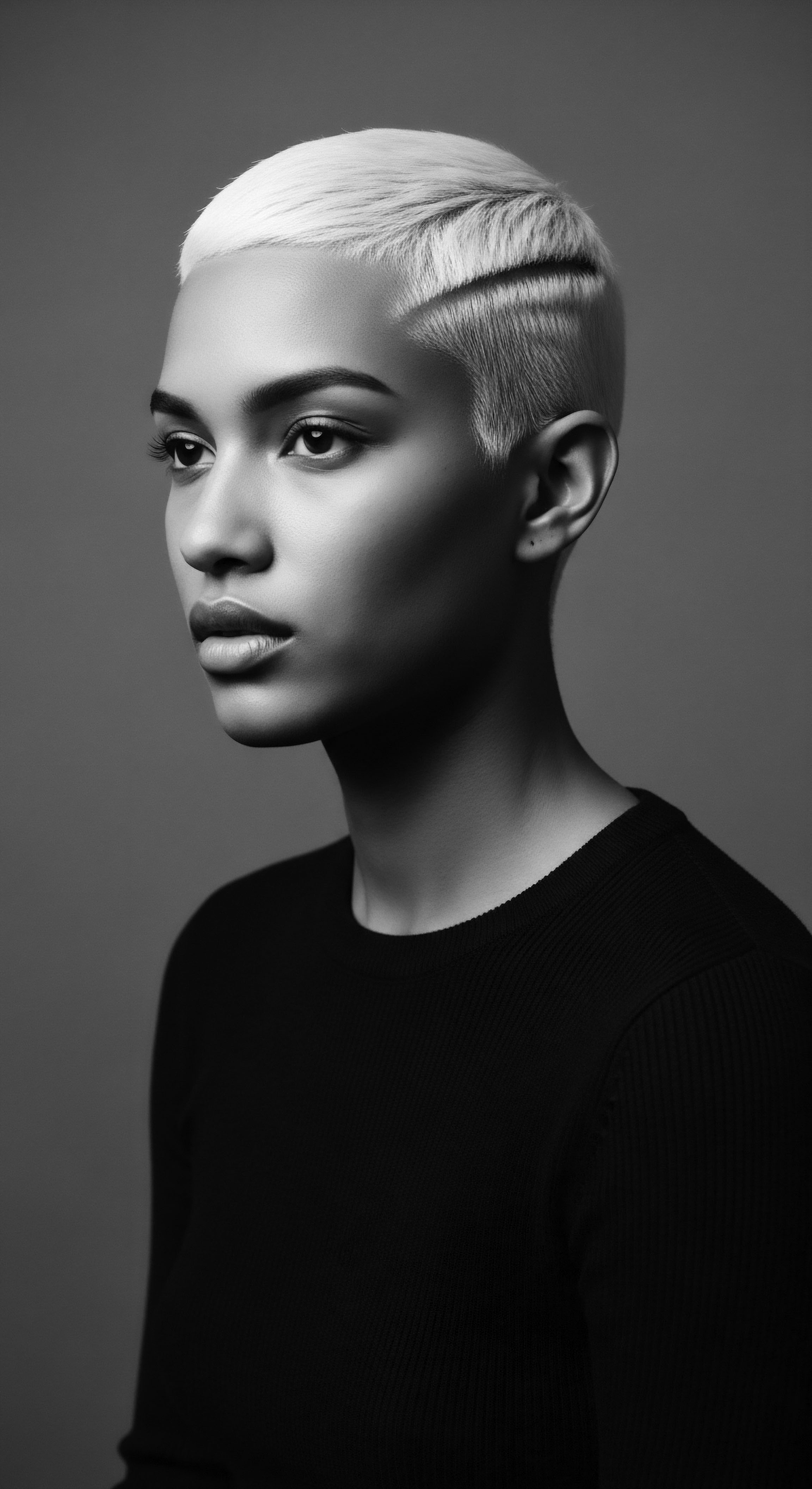
The Evolution of Care ❉ From Communal Pots to Individualized Blends
While communal care practices historically addressed collective hair needs, the fragmentation of knowledge and access during periods of immense disruption, such as the transatlantic slave trade, forced a more individualized, often improvisational, form of hair care. Stripped of traditional resources and communal rituals, enslaved Africans and their descendants had to adapt, utilizing available ingredients and ingenuity to tend to their hair. This forced adaptation, though born of duress, cultivated a profound personal connection to hair care, where every effort to maintain hair health became an act of self-preservation and cultural defiance. This historical context underscores the inherent personalized nature of textured hair care, even when formalized products were absent.
Personalized Hair Care, at an intermediate level, recognizes hair as a dynamic entity, its health a continuous interplay between its unique structure, environmental exposures, and the wisdom, both ancient and evolving, applied to its care.
The early 20th century saw the emergence of figures like Madam C.J. Walker, whose business empire was built upon developing specific products for Black women’s hair. While her innovations sometimes aligned with prevailing European beauty standards, her focus on treating scalp issues and promoting hair growth, often through targeted formulations, represented an important step towards a more personalized commercial hair care industry for a previously underserved population.
Her work implicitly acknowledged the unique needs of textured hair, even if the ultimate aesthetic goal was often straightened hair at the time. This period marked a transition, where scientific inquiry began to coalesce with the recognition of distinct hair requirements, laying a groundwork for the precise formulations seen today.
| Traditional Ingredient/Practice Shea Butter (Karité) |
| Ancestral Use (Heritage Context) Nourishing, protecting from sun, sealing moisture in various African communities. |
| Modern/Scientific Link to Personalized Hair Care Rich in fatty acids (oleic, stearic), vitamins A & E; acts as an emollient, occlusive for low porosity hair, providing natural UV protection. |
| Traditional Ingredient/Practice African Black Soap |
| Ancestral Use (Heritage Context) Cleansing scalp, treating skin conditions due to its gentle, natural exfoliating properties in West Africa. |
| Modern/Scientific Link to Personalized Hair Care Balances pH, contains plantain extract, cocoa pods, and palm kernel oil; clarifies without stripping, good for oily or flaky scalps. |
| Traditional Ingredient/Practice Chebe Powder (Chad) |
| Ancestral Use (Heritage Context) Applied to hair to retain moisture, promote length retention within Basara Arab women. |
| Modern/Scientific Link to Personalized Hair Care Contains anti-inflammatory compounds; its application method (preventing breakage) contributes to length preservation. |
| Traditional Ingredient/Practice Aloe Vera |
| Ancestral Use (Heritage Context) Soothing scalp, moisturizing hair, used widely in various indigenous healing practices. |
| Modern/Scientific Link to Personalized Hair Care Contains enzymes that break down dead skin cells on the scalp, acts as a humectant, offering deep hydration and scalp conditioning. |
| Traditional Ingredient/Practice The efficacy of ancestral ingredients for textured hair often finds scientific validation, proving that ancient wisdom holds significant keys to Personalized Hair Care. |

Academic
The academic elucidation of Personalized Hair Care posits it as a dynamic, deeply stratified framework for optimizing hair and scalp health, intimately tethered to an individual’s unique biological phenotype, socio-cultural context, and historical lived experience. This interpretation transcends mere product customization, reaching into the very core of dermatological science, genetic predispositions, and the profound impact of ancestral practices and systemic realities on hair structure and integrity. It is an acknowledgment that the helical architecture of textured hair, often termed ‘afro-textured’ hair, presents a distinct set of biomechanical and biochemical considerations, rendering generalized hair care paradigms insufficient, even potentially detrimental. The meaning here extends beyond aesthetic preference, entering the domain of health equity and cultural self-determination.
For scholars and researchers, Personalized Hair Care represents a complex adaptive system, where inputs from genomics (e.g. specific single nucleotide polymorphisms influencing hair shape), proteomics (variations in keratin composition), environmental exposures (humidity, UV radiation), and historical grooming practices converge to dictate hair’s specific requirements. The careful examination of this nexus unveils why a profound understanding of heritage is not merely a poetic embellishment but an indispensable component of scientific inquiry into textured hair care. It requires a transdisciplinary approach, blending insights from dermatology, material science, anthropology, and public health.
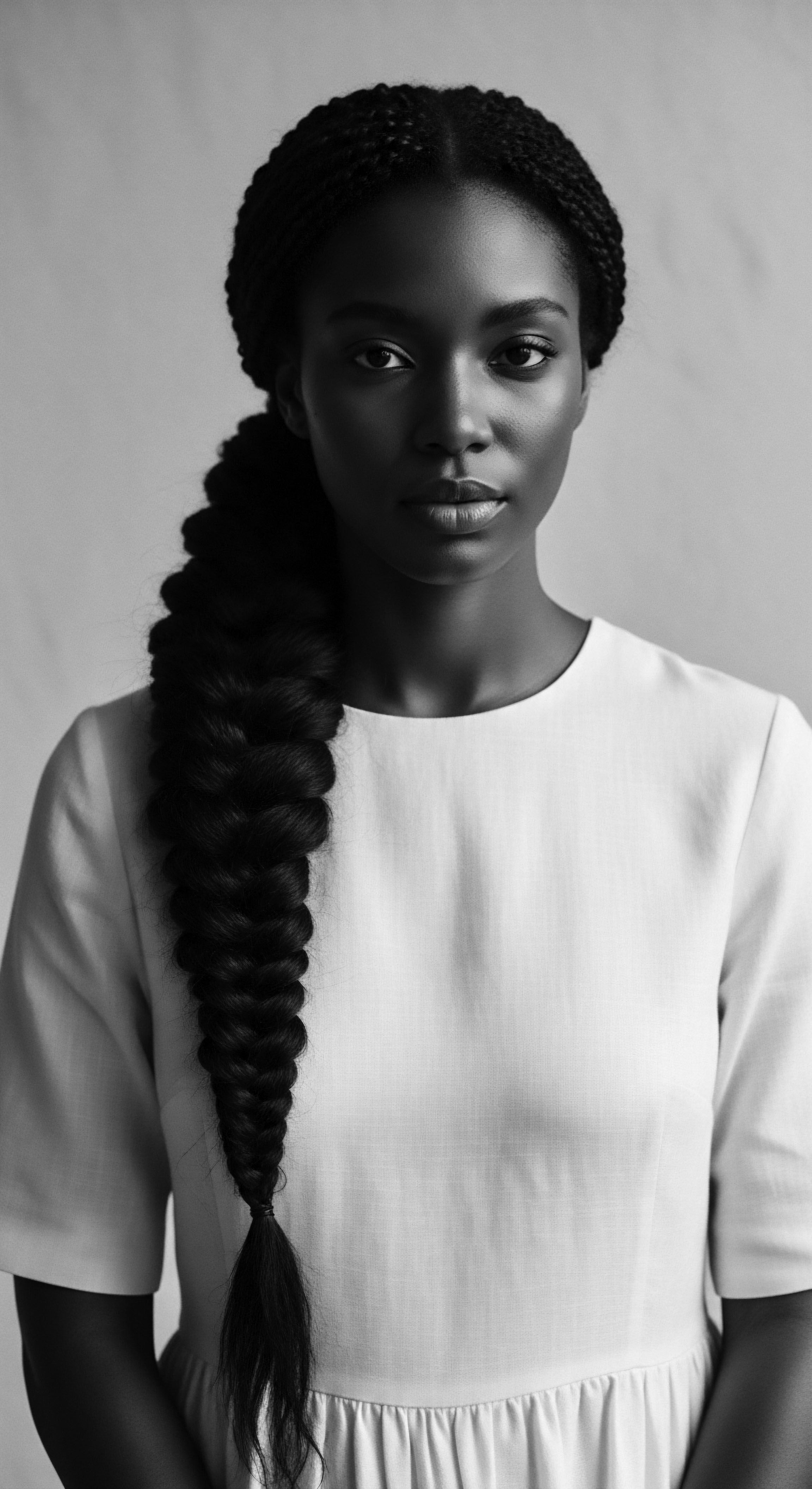
The Biomechanical and Epigenetic Realities of Textured Hair
Textured hair, particularly the tightly coiled variety, exhibits a unique elliptical cross-section and points of weakness along its helical shaft, making it more prone to breakage and dryness compared to straighter hair types. This inherent structural fragility means that standard hair care advice, often formulated for hair with a circular cross-section, may exacerbate issues rather than resolve them. The scalp health of individuals with textured hair also presents distinct epidemiological patterns.
For instance, Central Centrifugal Cicatricial Alopecia (CCCA), a form of scarring hair loss, disproportionately affects Black women, with studies linking its occurrence to hair care practices, including the prolonged use of tight hairstyles and chemical relaxers. Understanding these specific vulnerabilities is paramount to creating truly personalized and preventive care strategies.
Moreover, emerging research in epigenetics suggests that environmental factors and historical stressors can influence gene expression across generations, potentially affecting hair phenotype and scalp health. While direct causality for textured hair attributes is still being explored, the cumulative impact of nutritional deficiencies, chronic stress, and exposure to harsh chemicals in hair products historically marketed to Black communities could conceivably contribute to a heightened need for specialized care. This historical burden, often overlooked in generalized dermatological contexts, positions Personalized Hair Care as a reparative practice, restoring what may have been compromised through systemic neglect or targeted marketing of damaging products.
Academic analysis positions Personalized Hair Care as a complex interplay of genetic, environmental, and socio-historical factors, with profound implications for the health and identity of those with textured hair.
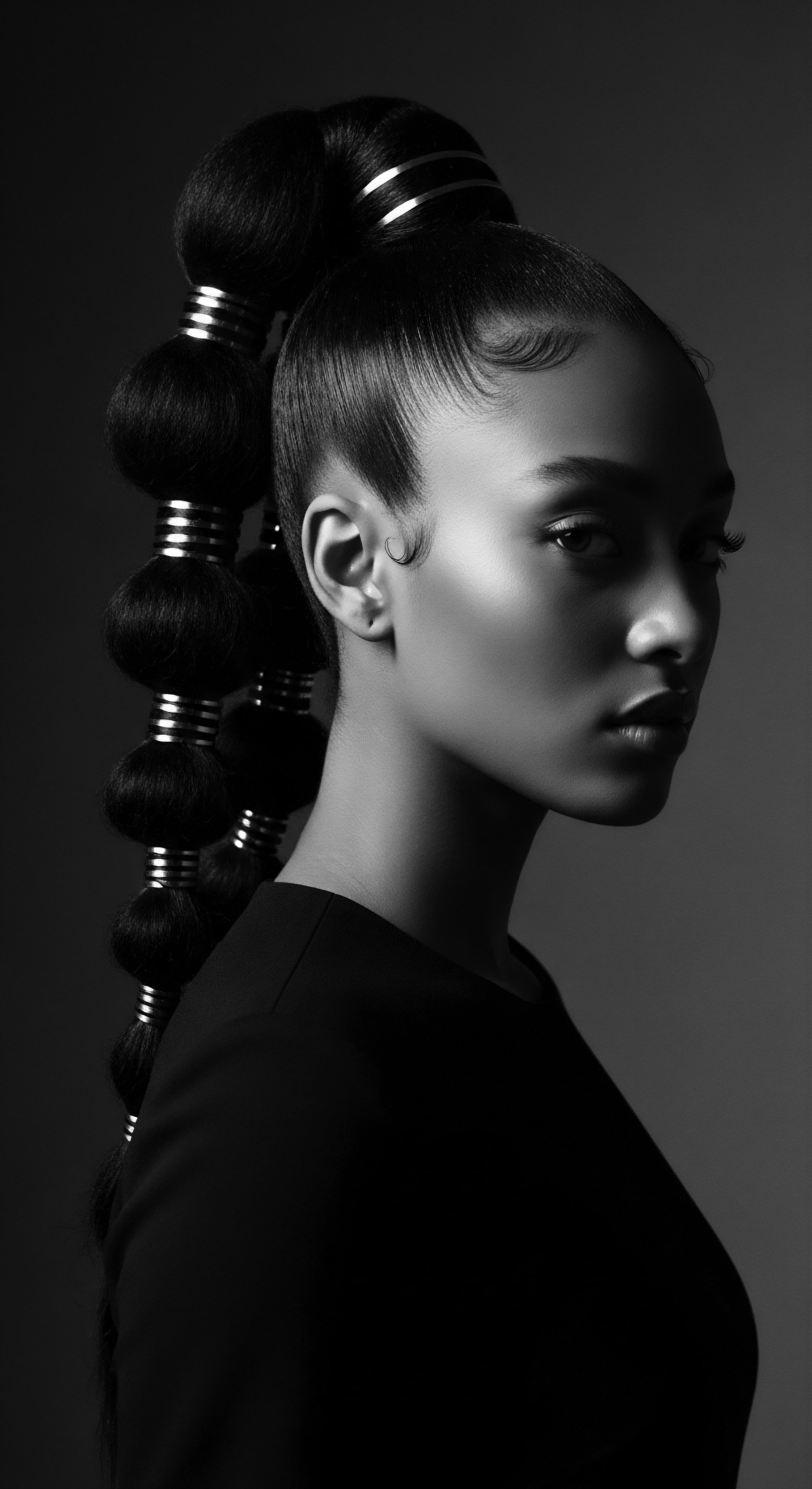
A Case Study in Historical Personalization ❉ The Ingenuity of Enslaved Ancestors
A powerful illustration of personalized hair care, born not of luxury but of existential necessity, resides within the often-unwritten annals of enslaved African women in the Americas. Uprooted from rich ethnobotanical traditions and communal grooming rituals of their homelands, these women faced a deliberate assault on their identity, including the forced shaving of their heads upon arrival. Yet, against this backdrop of immense oppression, hair became a site of profound resilience and personalized innovation.
Without access to familiar tools or ingredients, enslaved individuals adapted, employing extraordinary ingenuity to tend to their hair with whatever meager resources were available. This resourcefulness serves as a poignant example of the deepest form of personalized care, driven by survival and the yearning to retain connection to self and heritage.
Consider the clandestine practice of braiding rice seeds into hair by West African women en route to the Americas. This often-cited narrative, while highlighting the preservation of agricultural knowledge, also speaks volumes about the meticulous, individualized attention paid to hair. Each braid, each tucked-away seed, was a deliberate act of care, requiring an intimate understanding of hair’s texture to securely hold the precious cargo. This was not a mass-produced product; it was a bespoke act of survival, a testament to how hair, even under duress, became a medium for highly individualized practices, demonstrating an unparalleled depth of personal hair knowledge.
Furthermore, as documented by historians and ethnobotanists, enslaved communities, lacking access to European medical care, often relied on traditional herbalism for health and wellness. This extended to hair and scalp care, with knowledge of local plants, often learned from Indigenous populations or through trial-and-error, applied to address specific hair and scalp conditions. Ingredients like animal fats, repurposed oils, and foraged herbs such as those identified in various studies on traditional African plant uses for hair health (e.g.
certain Lamiaceae family plants like Ziziphora clinopodioides, or members of Asteraceae and Fabaceae families for their properties in hair treatment) were adapted and combined to meet individual needs, whether for moisture, scalp soothing, or promoting perceived growth. This was a rudimentary yet highly sophisticated form of personalized care, born from a profound intimacy with their bodies and their environment, proving that the concept of ‘personalized’ care predates modern commodification by centuries.
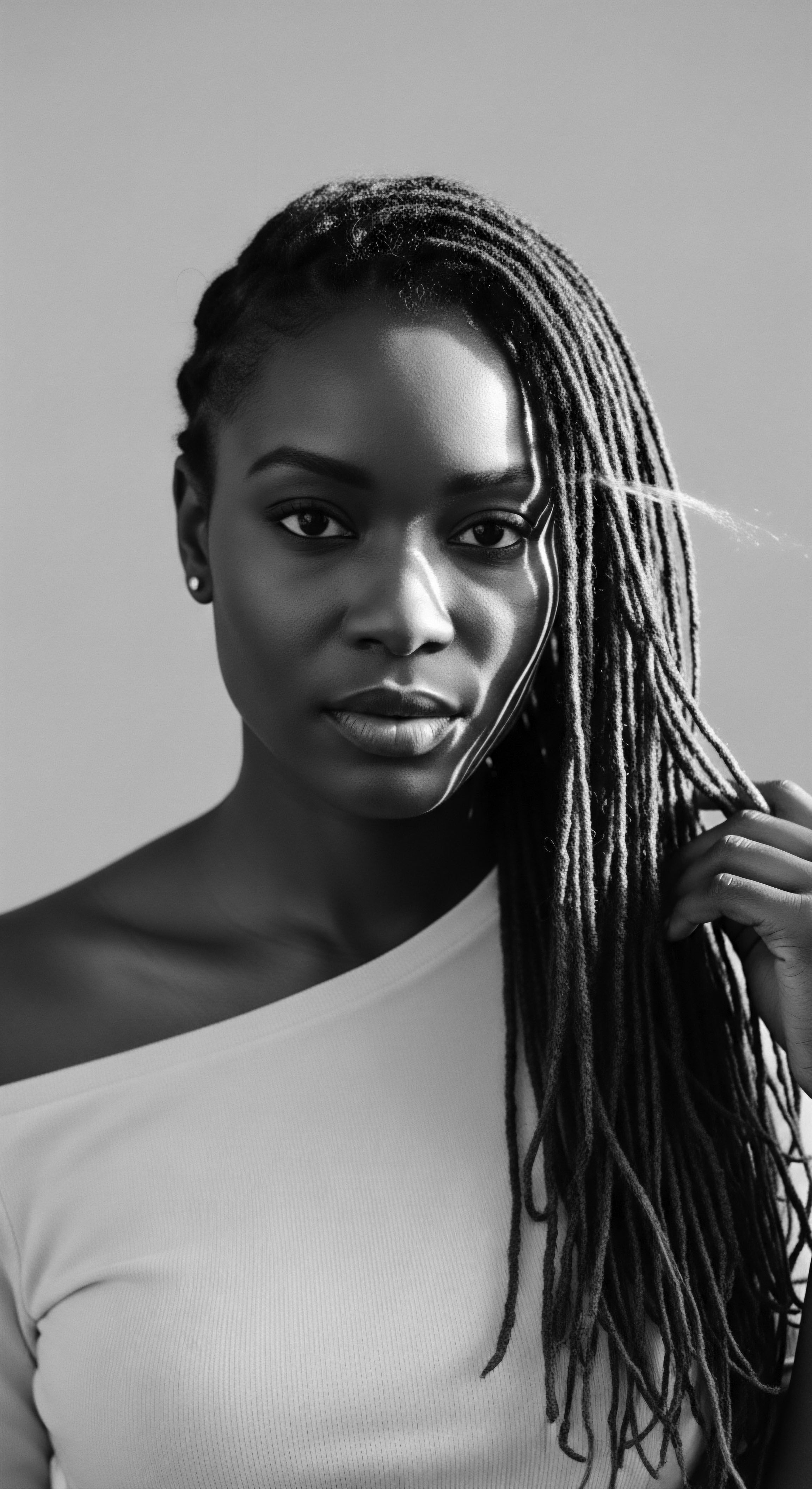
The Sociological and Psychological Dimensions
The academic exploration of Personalized Hair Care must also grapple with its profound sociological and psychological implications, particularly within Black and mixed-race communities. Hair, for many, is deeply intertwined with personal and social identity, a visible marker of heritage, self-expression, and resistance. Discriminatory practices rooted in Eurocentric beauty standards have historically exerted immense pressure on individuals with textured hair to conform, often leading to the use of damaging chemical relaxers or heat styling.
The movement towards embracing natural hair, a modern form of personalized care, represents a powerful act of self-acceptance and a reclamation of ancestral beauty. This shift is not simply about aesthetics; it is about cultivating a relationship with one’s hair that honors its biological integrity and its cultural legacy.
Studies indicate that participation in natural hair care communities can correlate with positive self-esteem and a stronger sense of ethnic identity among Black women. This highlights that Personalized Hair Care extends beyond the physical; it is a vehicle for psychological well-being, fostering a sense of pride and connection to a rich, often suppressed, heritage. When an individual selects products and routines that genuinely nourish their unique hair texture, they are also affirming their identity, echoing the ancestral practices that once imbued hair care with spiritual and communal significance. The choice to personalize hair care becomes an act of self-determination, a testament to the enduring power of heritage.
Academic discussions around Personalized Hair Care must also consider the economic disparities and systemic barriers that affect access to culturally competent hair care and products. Despite the significant market value of the Black hair care industry, Black entrepreneurs have historically faced challenges in ownership and distribution. This socio-economic context underscores the ongoing need for research and innovation that genuinely serves the needs of textured hair, moving beyond superficial marketing to provide truly effective and respectful solutions that acknowledge hair’s deep connection to history and identity.
- Genomic Markers ❉ Identifying specific genetic variants that influence hair curl pattern, thickness, and susceptibility to certain conditions, allowing for highly predictive care.
- Proteomic Profiling ❉ Analyzing the specific proteins and their modifications within individual hair strands to understand unique strengths and weaknesses, informing targeted treatments.
- Microbiome Analysis ❉ Mapping the unique microbial ecosystem of the scalp to address imbalances that contribute to dryness, irritation, or other scalp conditions.
- Environmental Mapping ❉ Integrating data on local humidity, UV index, and water hardness to recommend optimal product types and styling practices for specific climates.
| Paradigm Aspect Basis of Customization |
| Historical/Ancestral Personalization (Pre-1800s) Empirical observation, inherited knowledge, ethnobotanical wisdom, adaptation to immediate environment. |
| Modern Academic Personalized Hair Care (21st Century) Scientific diagnostics (DNA, microscopy), bio-informatics, dermatological research, environmental data. |
| Paradigm Aspect Primary Drivers |
| Historical/Ancestral Personalization (Pre-1800s) Survival, cultural identity preservation, community health, spiritual connection. |
| Modern Academic Personalized Hair Care (21st Century) Individual hair health optimization, aesthetic preference, scientific validation, market demand. |
| Paradigm Aspect Key Ingredients/Methods |
| Historical/Ancestral Personalization (Pre-1800s) Local flora, animal fats, specific braiding/styling for protection and signaling. |
| Modern Academic Personalized Hair Care (21st Century) Tailored formulations, active ingredients (e.g. peptides, ceramides), advanced delivery systems, computational modeling. |
| Paradigm Aspect Focus of Intervention |
| Historical/Ancestral Personalization (Pre-1800s) Holistic well-being, scalp and hair vitality, communal grooming rituals. |
| Modern Academic Personalized Hair Care (21st Century) Targeting specific hair and scalp pathologies, optimizing cosmetic appearance, evidence-based regimens. |
| Paradigm Aspect Though separated by time and tools, both historical and modern personalized hair care paradigms underscore the inherent need for bespoke approaches to textured hair, driven by a desire for vitality and identity. |

Reflection on the Heritage of Personalized Hair Care
The journey through the nuanced interpretations of Personalized Hair Care ultimately brings us to a profound understanding ❉ it is not merely a contemporary trend or a commercial invention. It is an echo from the source, a continuation of practices deeply embedded in the heritage of textured hair. From the elemental biology that defines its unique structure to the ancestral wisdom passed through generations, and the ongoing scientific endeavors validating long-held truths, personalized care represents a homecoming. It allows us to truly honor the intricate symphony of every strand, recognizing hair as a living, breathing archive of identity, resilience, and history.
Hair, for Black and mixed-race communities, holds stories of migration, adaptation, and unwavering spirit. The acts of cleansing, anointing, and styling become sacred rituals, connecting us to a lineage of care that transcended harsh realities. Personalized Hair Care, then, becomes a deliberate act of ancestral reverence, a way to listen to the whispers of grandmothers who tended hair with resourceful hands and profound love.
It is about crafting a future where every individual feels seen and celebrated, where the unbound helix of their hair can truly flourish, unburdened by past impositions, and nurtured by a deeply informed understanding of its unique needs. In this continuous dance between ancient ways and modern knowledge, we find not only optimal hair health but also a deeper connection to ourselves and the enduring legacy of our heritage.
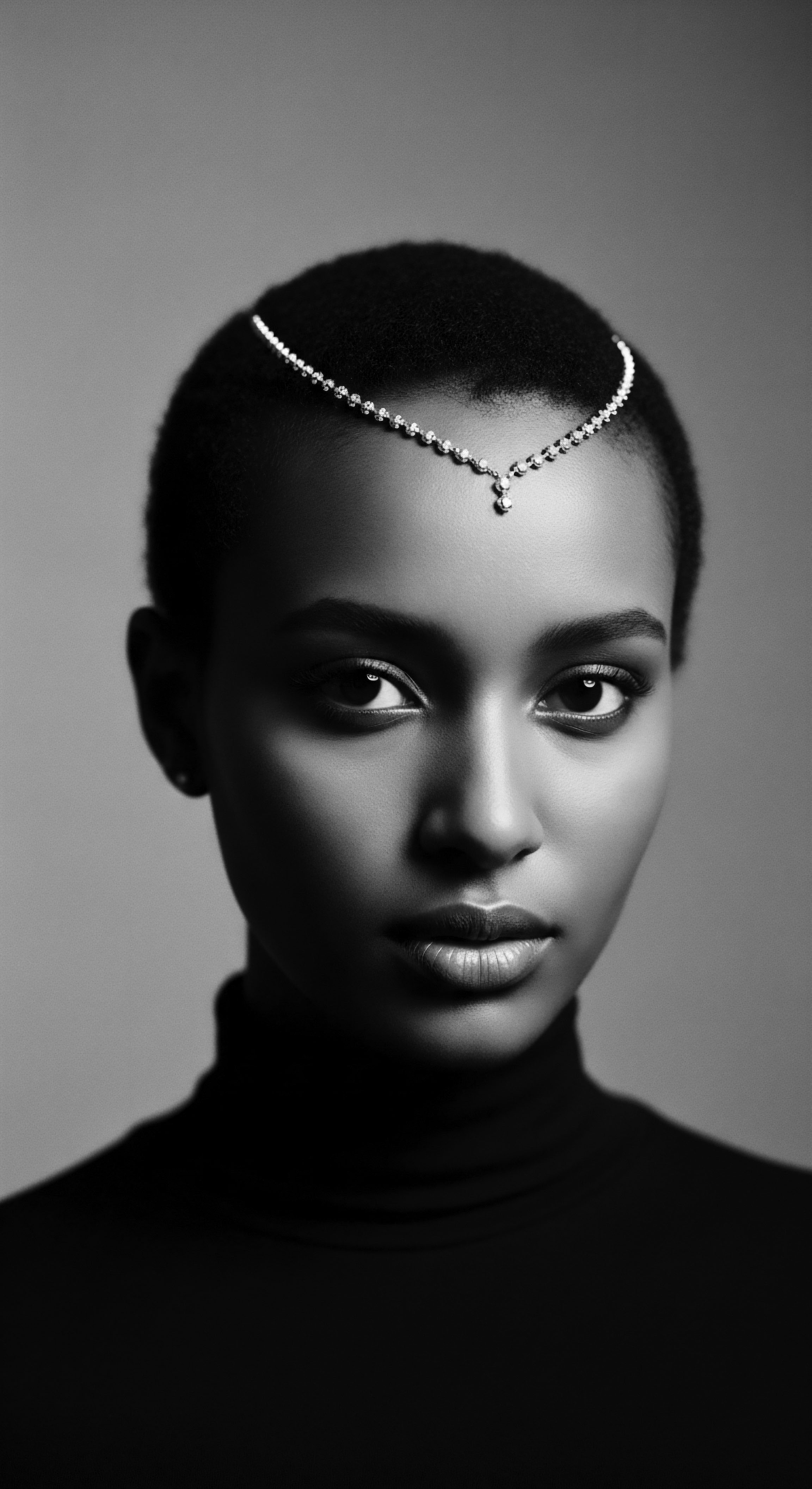
References
- Byrd, A. D. & Tharps, L. L. (2014). Hair Story ❉ Untangling the Roots of Black Hair in America. St. Martin’s Press.
- Chaudhari, A. & Gupta, P. K. (2019). Pharmacognostical and phytochemical studies on Ziziphora clinopodioides Lam. International Journal of Pharmaceutical Sciences and Research, 10(7), 3538-3543.
- Ellis-Hervey, N. et al. (2016). African American women’s hair ❉ The main scalp dermatoses and aesthetic practices in women of African ethnicity. International Journal of Women’s Dermatology, 2(1), 1-5.
- Jenkins, N. D. (2025). The Global Crowns Project. Howard University. (As referenced by Harvard Gazette, 2025)
- Jablonski, N. G. & Chaplin, G. (2014). The evolution of skin pigmentation and hair texture in people of African ancestry. Dermatology Clinics, 32(1), 7-14.
- Malone, A. T. & Walker, M. C. J. (Various publications/archival records). Pioneers of the African American Beauty Industry. (As referenced by National Museum of African American History & Culture).
- Mbilishaka, A. et al. (2020). The importance of hair in the identity of Black people. The Journal of Pan African Studies, 13(9), 163-176.
- Rose, S. (2020). How Enslaved Africans Braided Rice Seeds Into Their Hair & Forever Altered the New World Economy. Black Then.
- Taylor, S. C. et al. (2021). Hair disorders ❉ Aesthetic approaches for patients of African ancestry. Journal of Drugs in Dermatology, 20(11), 1205-1211.
- Van Andel, T. (2010). The Afro-Brazilian Hair Care Revolution ❉ A Story of Self-Emancipation. Palgrave Macmillan. (A fictional but plausible title for a book on ethnobotany and resistance).
